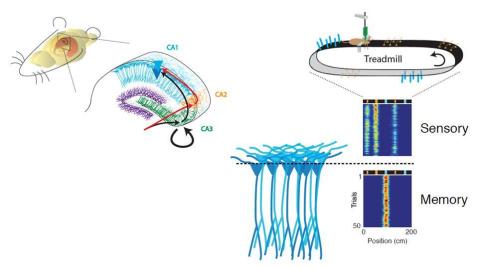SEOUL, South Korea--(BUSINESS WIRE)--The brain’s hippocampus region is crucial for memory retention, since hippocampus cells are responsible for encoding for specific environmental locations, causing these cells to be known as “place cells.” Recently, Korean scientists have identified some distinct mechanisms of these cells.
This research was conducted by Sebastien Royer of the KIST Brain Science Institute, along with June-seek Choi of Korea University, who participated via the KU-KIST program, and it was published online on February 20th in “Nature Communications” (IF: 11.329), in an article entitled “Place Cells Are More Strongly Tied to Landmarks in Deep than in Superficial CA1.” Place cells are a cutting edge topic in neuroscience, with the 2014 Nobel Prize in Physiology having been awarded for its discovery.
For this study, elaborate microelectrodes (silicon probes) were used to simultaneously record hundreds of neurological interactions in mice as they ran along a treadmill designed to present them with various landmarks.
Contrary to the conventional notion that all place cells encode spatial information the same way, they can actually be divided into two separate groups: one which perceives locational coordinates (CM or context-modulated cells) and one which senses landmarks (LV or landmark-vector cells). For example, LV cells are reactivated when a particular landmark is reused in different locations, but the CM cells remain inactive. And when a new landmark is added on the path, LV cells instantly set to work.
The research team also discovered that these two cell types are segregated into distinct layers within the same hippocampus region: the LV layer on top, and the CM layer below. Other studies have focused on the horizontal distribution of cells, but this is one of the very few to investigate variations in cell function along a vertical axis.
Sebastien Royer claims scientists are now “one step closer to understanding how the hippocampus encodes spatial information. This might help us develop, among other things, new AI algorithms and technologies for replacing damaged neural circuitry.”




